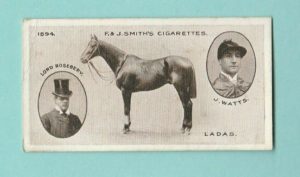Who owned Dawn Run?
Dawn Run etched her name, indelibly, into the annals of Cheltenham Festival history when, in 1986, she became the first and, so far, only horse to complete the Champion Hurdle – Cheltenham Gold Cup double. Trained by the late Paddy Mullins in Co. Kilkenny, Dawn Run was ridden to her two greatest triumphs by Jonjo O’Neill, but only after her regular partner Tony Mullins was ‘jocked off’ by owner Charmian Hill on both occasions.
At the age of 62, Hill, a.k.a. the ‘Galloping Granny’, had ridden Dawn Run on her first three starts, before being deemed too old to continue riding by the Turf Club. Nevertheless, she pulled no punches when it came to riding arrangements for her horse; Paddy Mullins made no secret of the fact that, ferocious as Dawn Run was, she was still easier to handle than her owner.
After missing most of the 1984/85 season through injury, Dawn Run took her career record to 3-3 over fences by winning at Punchestown and Leopardstown in December, 1985, before heading to Cheltenham for the Holsten Distributors Chase in January, 1986. Sent off at 4/9 favourite, Dawn Run made a mistake at the final open ditch and unseated Tony Mullins, leading to speculation that, despite winning 15 races on the mare, he would be replaced for the Cheltenham Gold Cup. Sure enough, he was and the rest, as they say, is history.
 The record for the widest winning margin is the history of the Derby still belongs to Shergar, trained by Sir Michael Stoute, who sauntered to a 10-length victory in 1981. However, the one-sided nature of that renewal, which led commentator Peter Bromley to exclaim, ‘You need a telescope to see the rest!’, resulted in a rather pedestrian winning time of 2:44.21.
The record for the widest winning margin is the history of the Derby still belongs to Shergar, trained by Sir Michael Stoute, who sauntered to a 10-length victory in 1981. However, the one-sided nature of that renewal, which led commentator Peter Bromley to exclaim, ‘You need a telescope to see the rest!’, resulted in a rather pedestrian winning time of 2:44.21. The Derby was inaugurated in 1780 and, in 242 runnings since, the shortest-priced winner of the Epsom Classic was Ladas, who was returned at odds of 2/9 in 1894. These super short odds make the idea of slot machine spins at
The Derby was inaugurated in 1780 and, in 242 runnings since, the shortest-priced winner of the Epsom Classic was Ladas, who was returned at odds of 2/9 in 1894. These super short odds make the idea of slot machine spins at